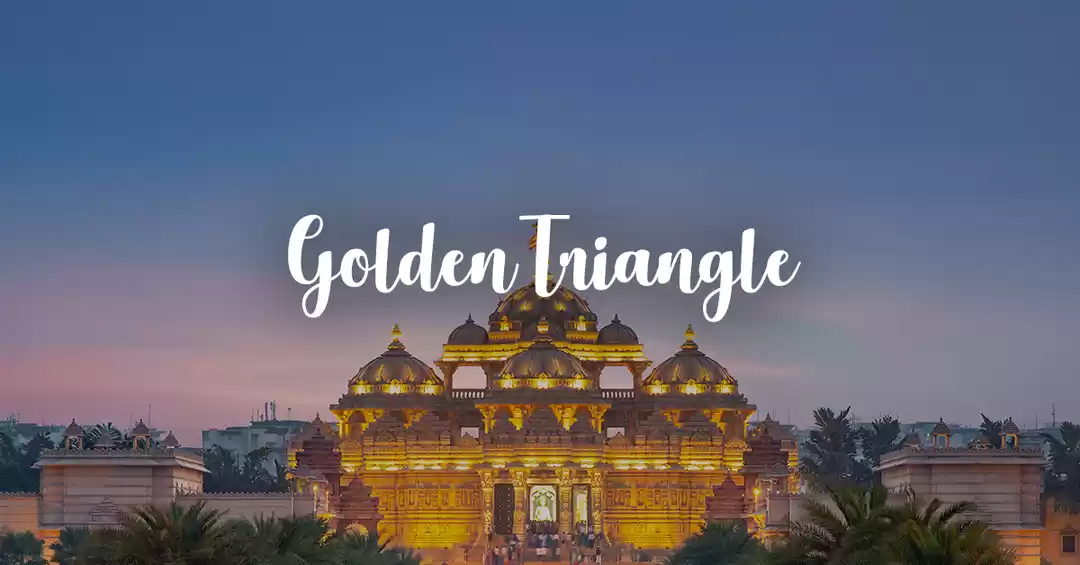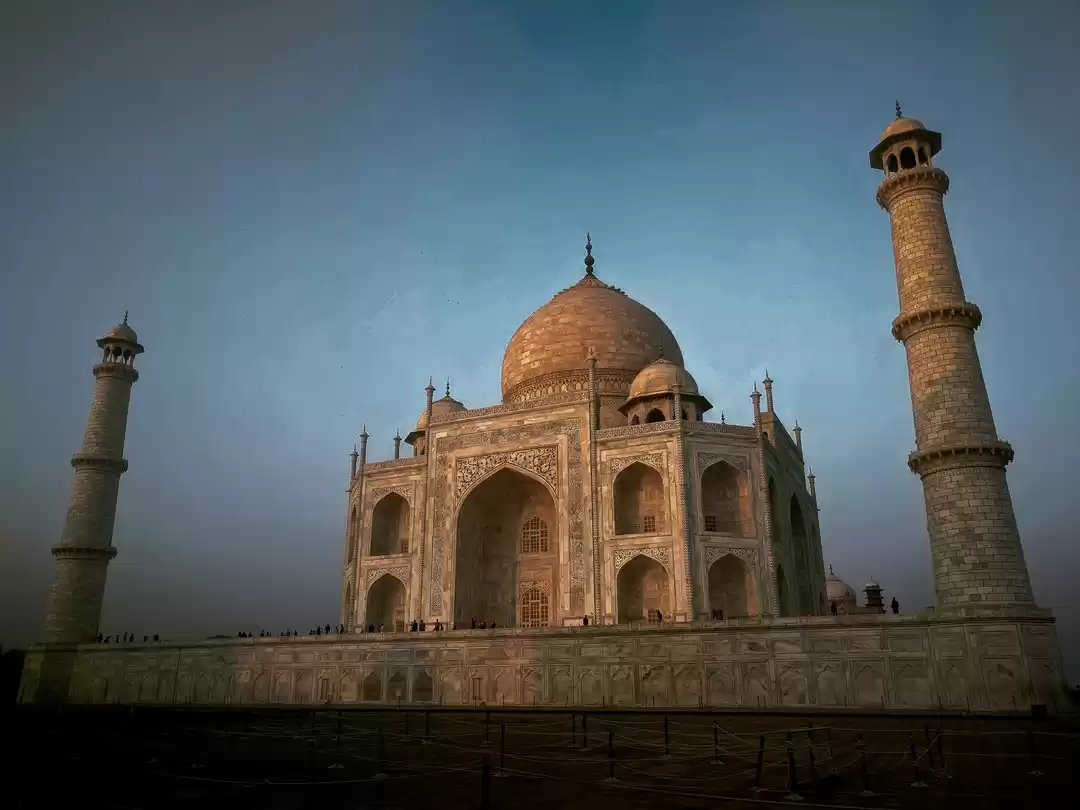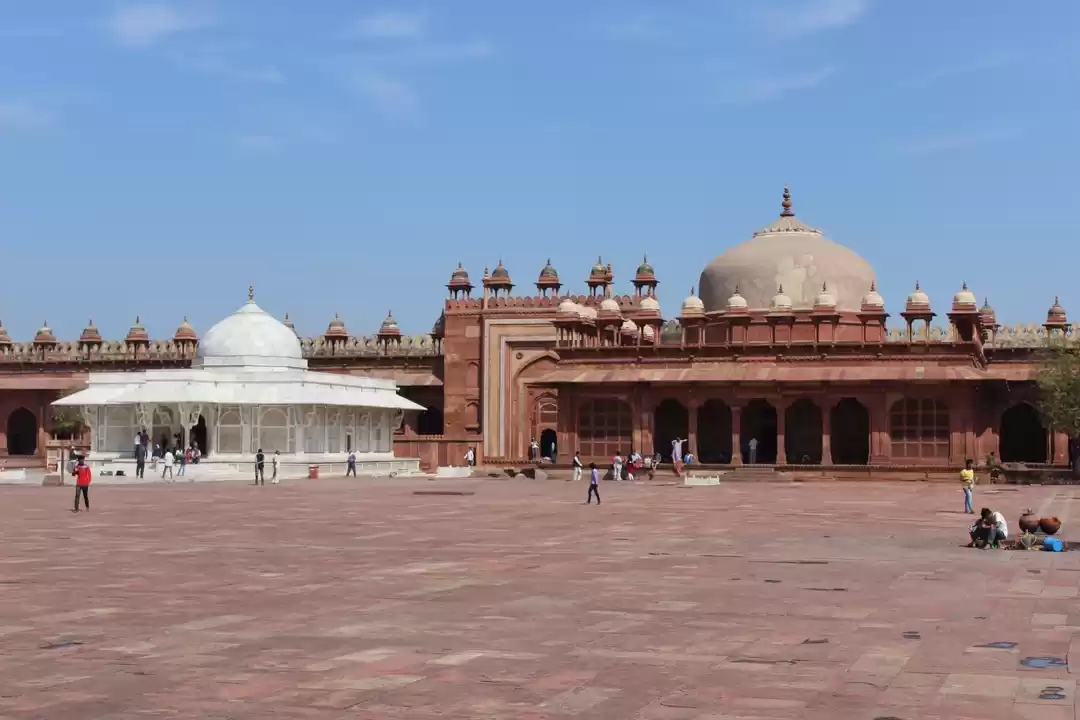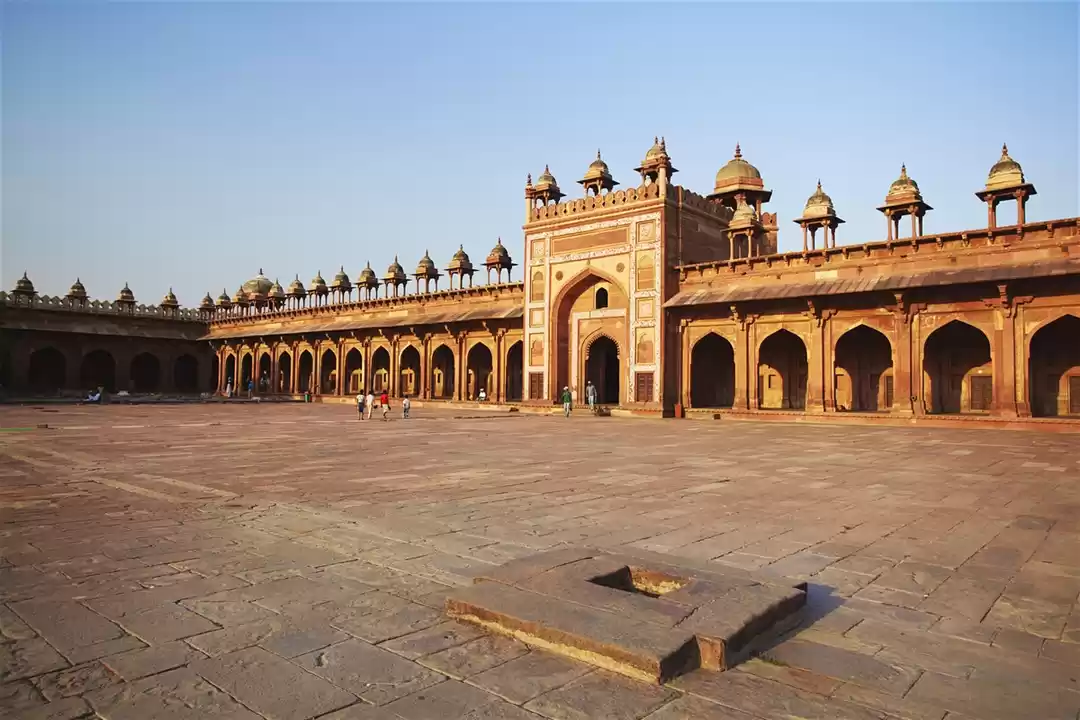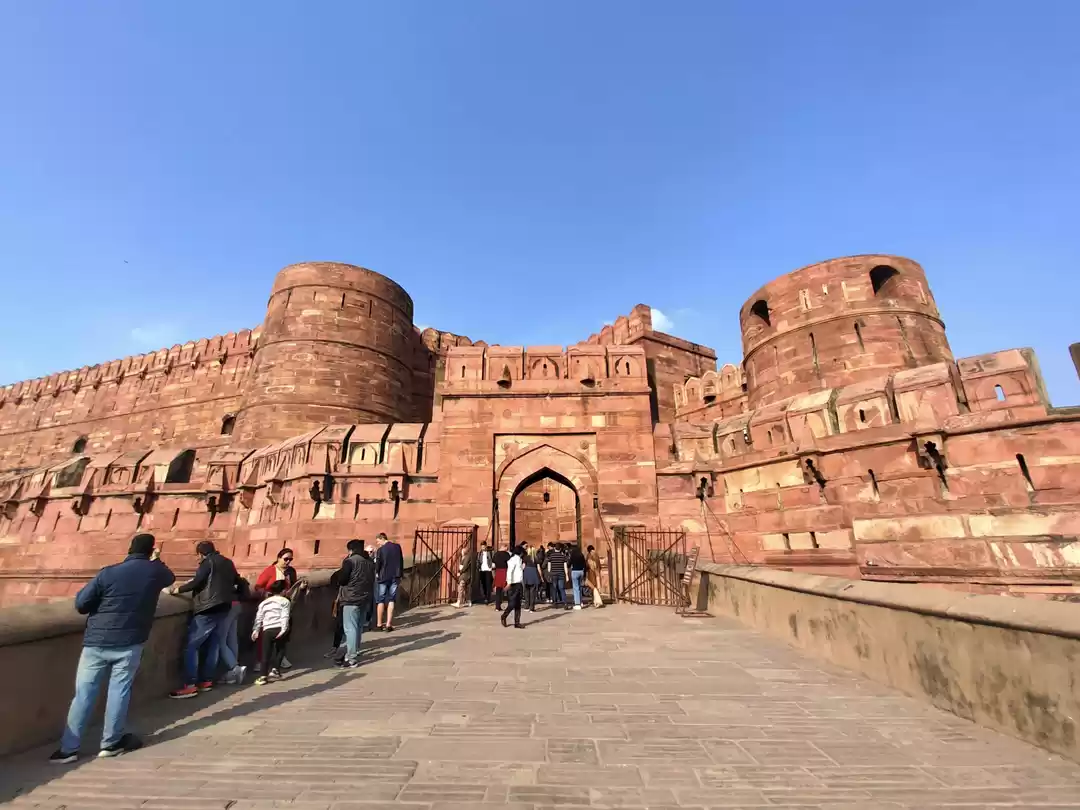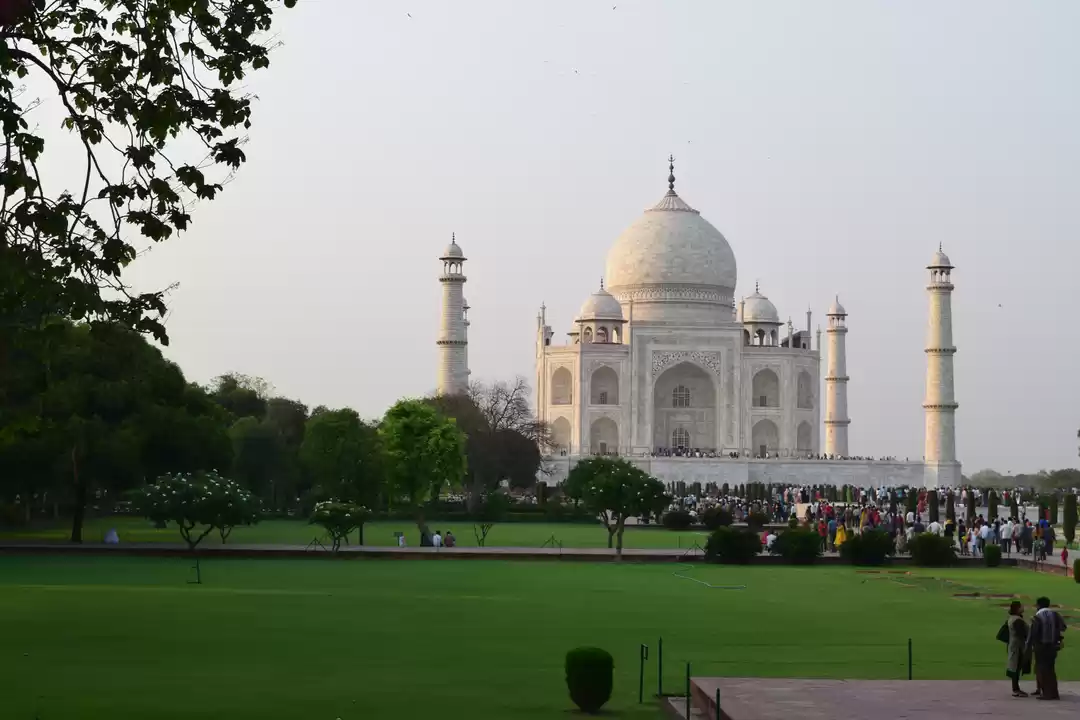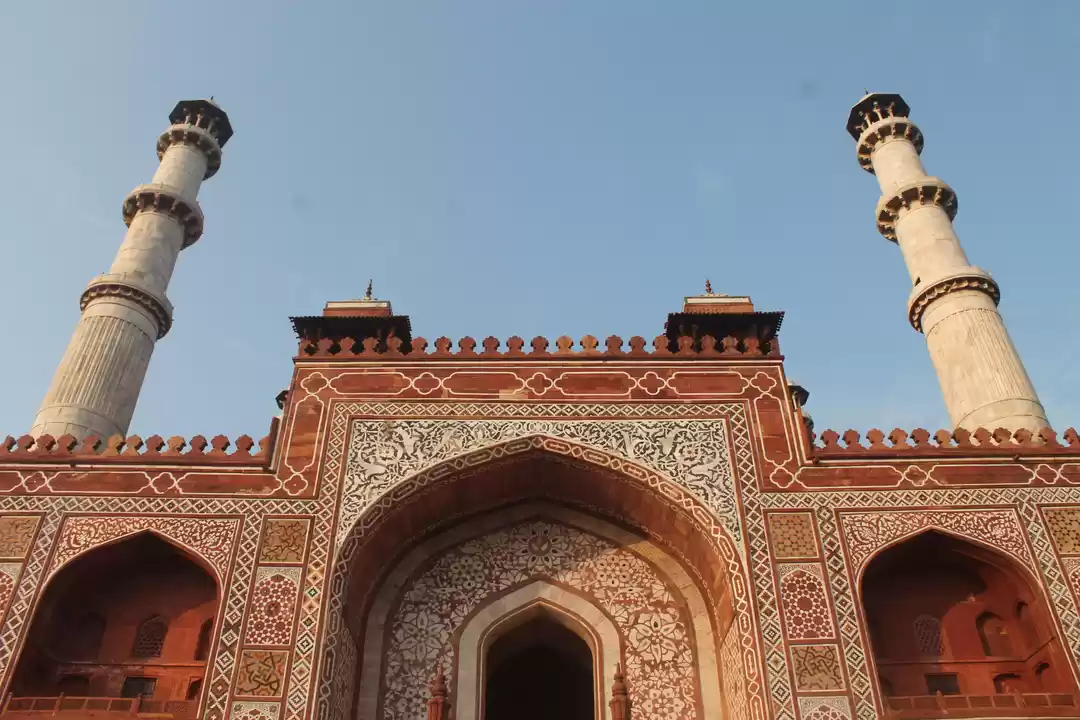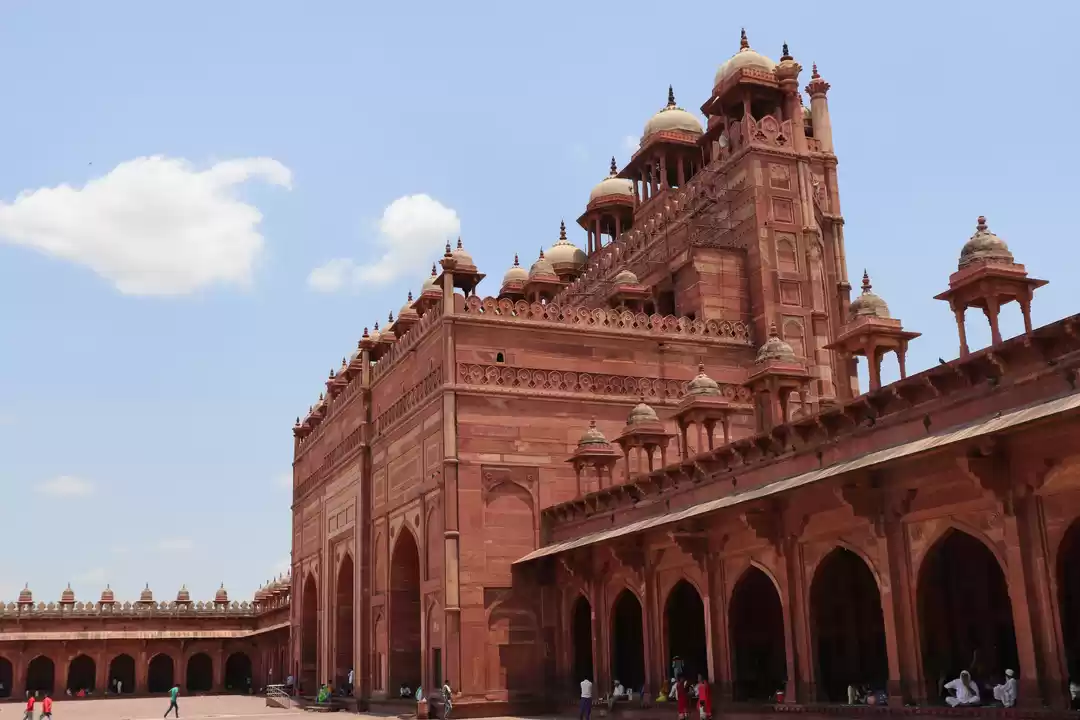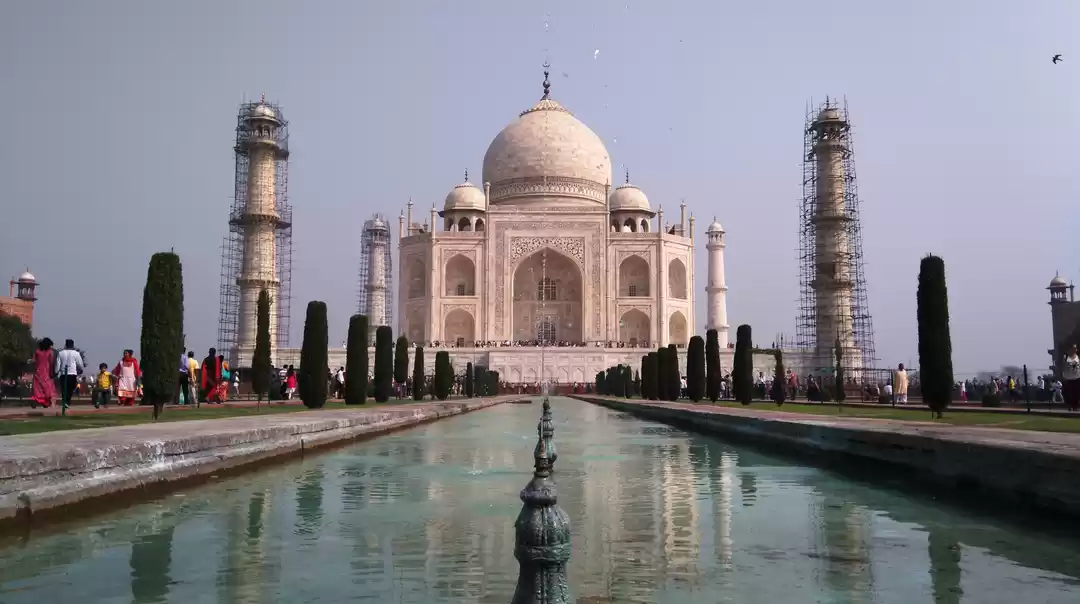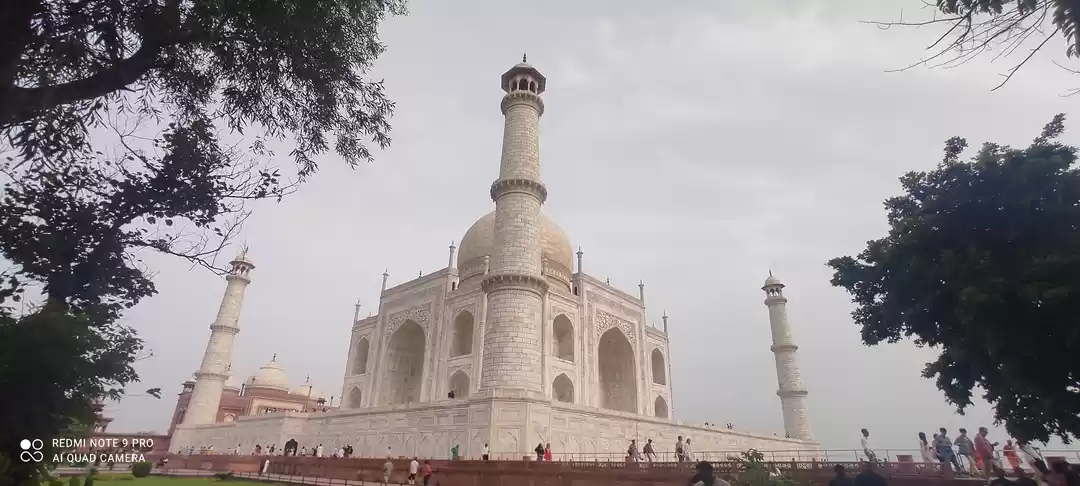
About Agra( The wonder City)
The uniqueness and importance of Agra are essentially the two factors that make this stunning city stand out, incomparable to the rest of the world. Agra is home to the famous Taj Mahal, one of the top tourist destinations and buildings in the entire world. Its immense amount of history doesn’t stop there, though! Agra also contains two other UNESCO World Heritage Sites: the Agra Fort and Fatehpur Sikri. The grounds of the Taj Mahal and Agra in general are completely jaw dropping and awe-inspiring. There is nothing like this city in the rest of the world, and it has been known to change lives.
The unique aspects are profound, such as the great stories behind the beautiful buildings existing today. The history of the Taj Mahal is unlike any other landmark and therefore has attracted so much attention over the years. People visit for the story behind the building; the feel of great love and beauty that comes from the initial thought that was put into it. The Taj Mahal has made a name for India with its perspective that is valued so much – to not only travelers but also the people of India that hold it in such high regard. A large number of the resident people had a helping hand in the project, which required a total of around twenty thousand workers, and taking a little over twenty years to complete. The Taj Mahal represents immense beauty and is highly considered one of the most treasured wonders of the world. This grandeur building was created in memory of Queen Mumtaz Mahal, wife of Emperor Shah Jahan. After she passed away, he dedicated this huge project to her in hopes of keeping her memory alive. People have carried on his wishes, and the Taj Mahal and its significant story will continue to live on in Agra, India, for hundreds of thousands of years. Join the great movement of this historic town by visiting Agra today!
Explore Top 20 Places To visit in AGRA

01- Taj Mahal
Timing: 6:00 a.m To 6:00 P.m
Entry Fees: Rs 250 for Indian & Rs 1200 For Foreigners.
Note :– It is Closed on Friday
Taj Mahal holds a place of pride in the minds of the Indians as its part of the Seven Wonders of the World and truly a delight for tourists across the globe. made out of white marble took 22 years to complete (1630-1652 AD). Ustad Ahamad Lahori, a Persian Architect, is said to be the main designer and planner for this magnificent memorial. On full moon nights, the glory of the Taj is at its best.Everyone at least once in a lifetme wants to take a lookat the Taj Mahal in Agra and we help you do so with our Taj Mahal Tour Packages.Taj Mahal the mausoleum built by Emperor Shah Jahan for his beloved wife Mumtaz Mahal is a great architectural marvel. It was built in the 17th century and is stll one of the most beautful buildings. These tours are some of the fnest that you could choose for yourself as it provides a fabulous view and trip around the Taj and also other places in Agra.
02-Taj Museum
Timing: 10:00 a.m To 07:00 P.m
Location : Inside the Taj Mahal
Visit Duration : 1 hour
The Taj Museum is located to the left of the central chamber of the main gateway to the Taj. One of the main exhibits to see are the two beautifully decorated marble pillars of Shah Jahan’s time. It is believed that these pillars were once part of the Agra Fort. The museum has many ornamental jade and porcelain objects on display, portraits of Shah Jahan, Mumtaz Mahal and other Mughal emperors.
Note: Please take note that the Museum is closed on Fridays
.03-The Mausoleum
Timing: 6:00 a.m To 06:00 P.m
Location : Inside the Taj Mahal
Visit Duration : 1 hour
Note: Please take note that the Museum is closed on Fridays.
To enter The Mausoleum visitors must climb a large red sandstone platform from the garden and proceed to wear cloth overshoes provided by the caretakers. The overshoes are important because one must respect the custom of not wearing shoes in a mosque and also protect the marble floor from scratches. The striking chessboard design of black and white on the raised platform is definitely a piece of art and a sight to see. The four minarets which stand 40 metres high are topped with an umbrella dome. The magnificent entrance to the Taj is through a 28 metre archway, which is finely inscribed with verses of the Koran. The three main types of work done in marble in the Taj are: the proportioned filigree work of the screens made in large sheets of marble, the lower work carved in relief and the inlay work which has beautiful precious or semi-precious stones that create colourful blossoms and other decorative motifs. The principal dome has an outstanding brass pinnacle. The Taj presents a graceful configuration of lines, curves and colour. Beneath the majestic dome is an enclosure formed by a screen of exquisitely wrought white marble, which is as fine as lace. An exact replica of Queen Mumtaz Mahal’s tomb is located here and the actual grave is located in the basement. The tombstones of Shah Jahan and Mumtaz Mahal rest on two separate raised platforms, which are ornately decorated with floral inlay designs. The best time to view the Taj is by moonlight, especially on a full moon night. On such nights the gates are kept open till midnight.
04-Agra Fort
Timing: 6:00 a.m To 6:00 P.m
Entry Fees: Rs 40 for Indian & Rs 550 For Foreigners.
Visit Duration : 2- 3 hrs
Construction of the massive red sandstone Fort Agra which lies on the west bank of river Jamuna became one of the principal cities of the Mughal Empire after the death of Ibrahim Lodi at Panipat in 1526 .The construction was started in 1565 and was completed in about eight years at a cost of thirty five lakh of rupees under the superintendence of Qasim Khan Mir Barr-u-Bahr.. In Akbar’s time the fort was principally a military structure, but during Shah Jaha regin it had partially become Palace. It is an imposing strcture with walls of red sandstone almost three kilometers long. Entered through the Amar Singh Gate, the eastern part of the fort contain palace, audience hall and mosques built by three emperors. The fort presents a good sampling of their favoured architectural styles. Akbar drew on Islamic and Hindu traditions and the result is eclectic. By Shah Jahan’s time the style had become so homogenized that it is impossible to seprate the Hindu and Muslim strands.The Diwan-i-Am (public audience hall), the beautiful Diwan-i-Khas (private audience hall) and the magnificent Moti Masjid (Pearl Mosque) were also added by Shah Jahan.
05-Diwan-i-Am (Hall of Public Audience)
Timing: 6:00 a.m To 06:00 P.m
Location : Inside the Agra Fort
Visit Duration : 15 minutes
Diwan-i-am is Known as one of the most impressive buildings built by Shah Jahan, this assembly hall is made with red overlaid with white shell plaster, giving it the effect of white marble. The Diwan-i-Am was also used an armory by the British till 1870. Visitors are welcomed to visit those parts of the palace, which were reserved for the private life of the Emperor and his court. For example, the Meena Bazaar was a venue where ladies shopped for precious jewels and silk.
06-The Diwan-I-Khas
Timing: 6:00 a.m To 06:00 P.m
Location : Inside the Agra Fort
Visit Duration : 20 minutes
The Diwan-I-Khas is the hall of private audience. It was used by the emperor to receive the important guests as kings, ambassadors and nobles in private. The Diwan-i-Khas in the Agra Fort has a ceiling covered with gold and silver leaves to imitate the rays of the sun. The interior hall is decorated in black stone. The Persian inscription inside this hall contrasts the hall to the heaven and the emperor as the sun. The chamber is decorated extravagantly with refined floral patterns on the border with beautiful carvings in the middle of the dado.
Diwan-i-Khas in the complex of Fathepur Sikri lies behind the Diwan-i-Am. Situated in the northern corner it is a small but impressive structure. At the center of the hall stands a magnificently sculptured stone column. The gall is known for its ornate and extravagant carvings. The column in the center splits into a set 36 hollow and hanging brackets.
07-Jahangiri Mahal
Timing: 6:00 a.m To 06:00 P.m
Located : Inside The Agra Fort
Visit Duration : 30 mins
Jahangir Mahal is one of the important structures in the Agra Fort complex. This palace was constructed for women belonging to the royal household. However the palace was dedicated to Akbar’s son Jahangir as a token of love.
This palace is a mix of both Rajput and Mughal architectural form and is one of the most magnificent buildings within the Agra Fort. A Hindu temple also exists at the back of the entrance hall. At one time the Jahangiri Mahal was covered with golden leaves and precious stones. Some remnants of this can be found in the central courtyard. Located in the front lawns is a very large bath-tub, which is carved from a single block of stone and has steps both inside and outside.
08-The Sheesh Mahal
Timing: 6:00 a.m To 06:00 P.m
Location : Inside the Agra Fort
Visit Duration : 20 minutes
Shesh Mahal is one of the important structures of the fort. The name suggests Mirror Palace. It is situated on the western side of the Octagonal Tower and was built by Shah Jahan. It was the royal dressing room with tiny mirror glass-mosaic decorations. It had extra thick walls to make the interior cool. The mirrors inlaid in the walls and ceilings illuminated the room with artificial lights and therefore it was made dark. The light that came into the room came from the two doors and a ventilator. The chambers comprises of marble tank with fountains for hot and cold water. The walls had small hollows where the candles can be placed and project the reflection on the falling water.
The walls in the outer hall are decorated with plant design borders. The stucco work picturing the bunch of flowers with the glass-mosaic. They might have contained mirrors or portraits originally.
09-Fatehpur Sikri
Timing: 6:00 a.m To 6:00 P.m
Entry Fees: Rs 40 for Indian & Rs 550 For Foreigners.
Visit Duration : 2- 3 hrs
This magnificent fortifield ghost city was the capital of the Mughal emperor Akbar between 1571 and 1585. It is 37 kms from Agra is built a city predominantly in Red Sandstone called Fatehpur Sikri. This town was built by the Mughal Emperor Akbar. He had planned this city as his capital but shortage of water compelled him to abandon the city and within 20 years the capital of Mughals was shifted to Lahore. The city is a fine example of culmination of Mughal and Hindu architecture. Any visitor to Agra must have a go at Fatehpur Sikri. Fatehpur Sikri mosque was said to be built in lines of the holy mosque in Mecca. Entrance to the mosque is through the Buland Darwaza that is 54m high. The city is rectangular in shape with 9 huge gates – Delhi Darwaza, Lal Darwaza, Agra Gate, Suraj and Chandra Darwaza, Tehra Gate and Ajmeri Darwaza.
The major attractions in the Fathepur Sikri are as following:-
Buland Darwaza: It is a 54 meter high structure and was added to the complex as a victory archeology. The visitors have to climb the giant steps to reach the Buland Darwaza.
Jama Masjid: The name suggests the Friday congregational mosque and was the first building to be built in the complex.
Tomb of Salim Chisti :It is the tomb of Sufi Saint Salim Chisti. The tomb is covered in white marble and is situated within the Jama Masjid Courtyard. It is a single storey structure with the grave of the saint.
Diwan-i-Am : The hall of Public Audience where the ruler used to meet the general public.
Diwan-i-khas: The Hall of Private Audience where the ruler used to discuss confidential matters. It is famous for its central pillar with 36 hollow pendulous brackets that supports a circular platform where the ruler used to stand.
Ibadat Khana: It was the house of worship or a meeting house.
Anup Talao: a decorative pool with a central stage with four bridges. The pool is surrounded by Khwabgah, Panch Mahal, Diwan-i-Khas and the Astrologer seat.
Naubat Khana: The name means Drum house, where musicians used drums to announce the arrival of the emperor.
Pachisi Court: A square marked as the present day Ludo game where people served as the playing pieces.
Panch Mahal: A five-tiered structure with a single large-domed chhatri on the top.
Birbal House : It was the house of Akbar’s favorite minister Birbal.
10-Buland Darwaza
Timing: 6:00 a.m To 06:00 P.m
Location : Inside the Fatehpur skiri
Visit Duration : 15 minutes
Tower of Silence The Buland Darwaza is a grand gateway located in Fatehpur Sikri near Agra. This triumphal arch was built by the Mughal Emperor Akbar, when he defeated the king of Khandesh or Gujarat in 1573.
The name Buland Darwaza means ‘High Door’ and this victory arch rises to a height of 40 meters or 175 feet. It is the most striking monument in Fatehpur Sikri and can be seen from quite a distance. Rising impressively towards the sky, the Buland Darwaza is approached by a series of steps. You will pass under the massive arch of the Buland Darwaza when you enter the city of Fatehpur Sikri.
11-Panch Mahal
Timing: 06:00 a.m To 05:00 P.m
Located : Inside the Fatehpur Sikri
Visit Duration : 1 hour
Panch Mahal is a five level building in Fathepur Sikri complex in Uttar Pradesh.
Fathepur Sikri is a city as well as a municipal board in Agra. It was also known as Sikrigarh and was constructed by Maharana Sangram Singh in 1500. Akbar attacked several times to conquer this city and at the seventh attack the Rajput King left the place. After victory the city was named as Fathepur Sikri.
The Panch Mahal is also called Badgir which is means wind-catcher. It also called the pleasure palace. The building is completely columned consisting of 84 columns. It is a four tiered structure with a large dome on the top. The pillars were said to be built originally with netted screens between them so that it can be used as cover to royal ladies on the terraces. The pavilion gives a splendid view of the Fathepur Sikri complex.
The palace was built by Emperor Akbar and was built on the pattern of a Buddhist Temple. It was the pleasure palace of Akbar and used it for relaxation and entertainment purpose. The pool called Anoop Talao was in front of the palace and the famous musician Tansen used to perform for Akbar.
12-Akbar’s Tomb, Sikandra
Timing: 6:00 a.m To 6:00 P.m
Entry Fees: Rs 15 for Indian & Rs 110 For Foreigners.
Visit Duration : 1-2 hrs
Akbar’s tomb is located at Sikandra, on the Agra Mathura road. It is 8 kilometres north-east of Agra and on the same side of the Yamuna river as the Taj. The Mughal emperor Akbar himself ordered the construction of his own tomb in around 1600. After His death, Akbar’s son Jahangir completed the construction in 1605-1613, As the Akbarnama states nothing about the description of the monument, Recorded references to the tomb are mostly from Jahangir’s rule. The Tomb of Emperor Akbar represents his philosophy and secular outlook, combining the best of Hindu and Muslim architecture in a superlative fusion. Completed in 1613 A.D, this is one of the best preserved monuments of the time.
The tomb is a combination of Muslim and Hindu architectural styles and the building is made of red sandstone and is four storeys high. The fourth storey is completely made of marble. The four minarets of marble over the gateway are the forerunners of those at the Taj. An interesting point about the minarets is that one cannot see all four minarets at the same time from any point; any one of them is always behind the other in the viewer’s line of vision.
13-Mariam’s Tomb (The Golden House)
Timing: 6:00 a.m To 6:00 P.m
Entry Fees: Rs 25 for Indian & Rs 300 For Foreigners.
Visit Duration : 1-2 hrs
Mariam, known widely as ‘Mariam Zamani’, the mother of Jahangir, was a most respectable queen in Mughal dynasty. It was when Jehangir built this marvelous tomb for his mother after her death. The tomb is the real specimen of Mughal style of architecture with beauty embedded design. The tomb looks alike from front or back, which is a special feature of this tomb.
This house was once covered in a number of frescoes of golden colour. It stands on a platform and consists of three small rooms and a central hall on the first floor. Beautiful Hindu carvings decorate the brackets of the pillar
Mariyam’s Tomb, an exquisite construction of 1611 AD, is located at Sikandra in the Christian Missionary Society compound about 13 km from Agra. The tomb is built for Mariyam, Mughal emperor Akbar’s beautiful wife from Goa. This tomb has been a great attraction due to its elegant carvings on the walls and also the marvelous beauty of red sandstone structure.
14-Itmad-Ud-Daulah
Timing: 6:00 a.m To 6:00 P.m
Entry Fees: Rs 30 for Indian & Rs 310 For Foreigners.
Visit Duration : 1-2 hrs
Akbar’s tomb is located at Sikandra, on the Agra Mathura road. It is 8 kilometres north-east of Agra and on the same side of the Yamuna river as the Taj. The Mughal emperor Akbar himself ordered the construction of his own tomb in around 1600. After His death, Akbar’s son Jahangir completed the construction in 1605-1613, As the Akbarnama states nothing about the description of the monument, Recorded references to the tomb are mostly from Jahangir’s rule. The Tomb of Emperor Akbar represents his philosophy and secular outlook, combining the best of Hindu and Muslim architecture in a superlative fusion. Completed in 1613 A.D, this is one of the best preserved monuments of the time.
The tomb is a combination of Muslim and Hindu architectural styles and the building is made of red sandstone and is four storeys high. The fourth storey is completely made of marble. The four minarets of marble over the gateway are the forerunners of those at the Taj. An interesting point about the minarets is that one cannot see all four minarets at the same time from any point; any one of them is always behind the other in the viewer’s line of vision.
15-Jama Masjid
Timing: 7:00 a.m To 12:00 P.m and 1:30 P.m To 6:30 P.m
Entry Fees: Free For all. Only Photography Charges Rs 30
Visit Duration : 1-2 hrs
Jama Masjid is also known as Jami Masjid which is one of the largest mosque in India, This mosque was built by Shah Jahan in 1648 with red sand stone and with little use of white marble , The Mosque is attributed to Shah Jahan?s daughter , Princes Jahanara Begum. The mosque is one of the citys main landmarks. It coasted 5 Lacks rupees at that time for its completion. There was a specious octagonal chowk which exist between jama Masjid and the Delhi Gate of the Agra Fort.
16-Dayal Bagh
Timing: 4:00 a.m To 07:00 P.m
Entry Fees: Free For all
Visit Duration : 1-2 hrs
Dayal Bagh is one of the unique tourist site located in Dayal bagh, Agra. The memorial is founded in the memory of Shiv Dayal Sahib the founder of the Radha Soami Satsang movement, who started this religious organization in 1861. This movement combine key elements from Hinduism, Christianity, Sikhism and Buddhism.Shiv Dayal Sahib, who lived from 1818 to 1878, was known as Soami Maharaj. He was the first Guru or religious leaders of the Radha Soami Satsang Movement.
17-Ram Bagh
Timing: 4:00 a.m To 07:00 P.m
Entry Fees: Free For all
Visit Duration : 1-2 hrs
Agra city has gained popularity, majorly because of the world renowned Taj Mahal. During the Mughal empire the city prospered a lot and was decorated by various buildings and gardens laid down by the Mughal. With the capital of Mughal Empire it also became the centre of learning, art, culture and religion.
The Ram Bagh is the oldest Mughal garden in Indian and was built by Emperor Babur. It is located about five kilometers from the Taj Mahal. Babur was originally buried here before being buried in Kabul. The garden is built in the form of Persian garden. It represents the garden as the paradise where there is a lush green garden with the abundance of water. It was originally called Aram Bagh; the garden was made on the banks of river Yamuna. The garden had many water cascades and fountains.
The name Aram Bagh means the garden of rest. Two pavilions facing the river had a basement used by the visitor in hot summer season for relief. According to the legend Akbar proposed to his third wife in this Garden. She was a gardener here and Akbar stayed idle in the garden for six days until she agreed to marry him.
18-Musamman Burj (Octagonal Tower)
Timing: 7:00 a.m To 05:00 P.m
Entry Fees : Rs 30 For Indian and Rs 300 For Foreigners
Visit Duration : 1 hour
Note: Please take note it is closed on Fridays.
It was said that in Shah Jahan’s last years, hampered by failing eyesight, he was not able to see the Taj from this tower. Hence, his physicians advised him to look at the Taj through a convex mirror. Today, visitors are able to view the Taj just as Shah Jahan once did through a small convex looking-glass, which is embedded in one of the walls of Musamman Burj. In the centre of the tower is a beautifully carved cistern with a fountain in the middle.
19-Chini-Ka-Rauza (China Tomb)
Timing: 09:00 a.m To 05:00 P.m
Entry Fees : No Entry Fees
Visit Duration : 1 hour
The Chini-Ka-Rauza is located about 1 kilometre north of the tomb of Itmad-ud-Daulah and is rectangular in shape with a bulbous dome. The concept of the tomb is entirely Persian, and it is one of the best examples of polychrome glazed tile decoration. The entire exterior is covered with sparkling glazed tiles in floral and stylized designs and the hallways are filled with paintings and stucco work.
20-Keetham Lake
Timing: 06:00 a.m To 05:00 P.m
Entry Fees : No Entry Fees
Visit Duration : 3 hours
The Sur Sarovar is a picturesque lake located about 23 km away from Agra, in Uttar Pradesh. Also known as the ‘Keetham Lake’, this astounding water body has always been a favorite haunt for group picnickers and nature lovers. Its serene beauty is said to have had influenced the poetic imagination of the great Sur Das. This lake has been the inspiration for him to pen ‘Bhakti Kavya,’ a devotional poem.
Sur Sarovar falls under the Sur Das Reserved Forest and was declared as a More than 100 species of migratory and native birds are found in this 7.13 sq km of tranquil paradise. Major bird species found here are gadwals and shovellers, bar-headed geese, brahminy ducks, sarus cranes, Siberian cranes and spoonbills. It is also home to more than 18 species of reptiles and 12 species of mammals. September to March constitute the tourist season.





